Click on images to enlarge
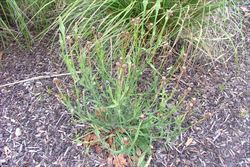
habit in flower (Photo: Sheldon Navie)
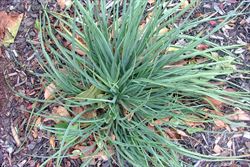
habit prior to flowering (Photo: Sheldon Navie)
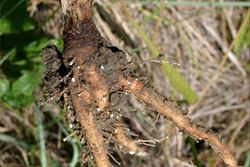
swollen roots (Photo: Trevor James)
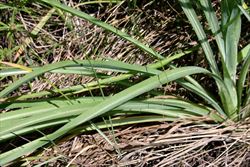
close-up of the long strap-like lower leaves (Photo: Trevor James)
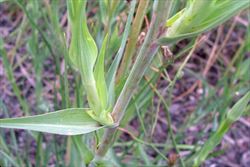
close-up of stem and upper leaves (Photo: Sheldon Navie)
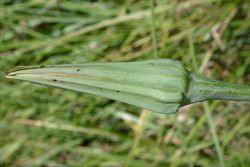
close-up of flower bud (Photo: Trevor James)
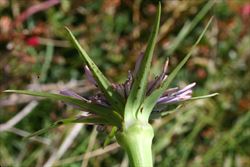
flower-head from underneath, showing the long floral bracts (Photo: Trevor James)
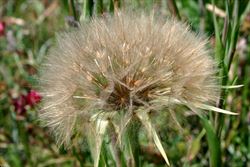
mature seed-head (Photo: Trevor James)

close-up of mature seeds topped with a long beak and feathery bristles (Photo: Sheldon Navie)
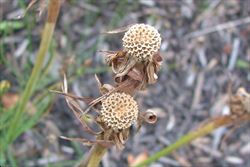
old seed-heads (Photo: Sheldon Navie)
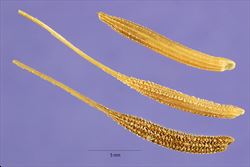
close-up of seeds with hairs removed (Photo: Steve Hurst at USDA PLANTS Database)
Scientific Name
Tragopogon porrifolius L.
Synonyms
Tragopogon porrifolius L. subsp. porrifolius
Family
Asteraceae (Queensland, New South Wales, the ACT, Victoria, Tasmania, Western Australia and the Northern Territory)
Compositae (South Australia)
Common Names
common salsify, goatsbeard, Jerusalem star, John-go-to-bed-at-noon, Joseph's flower, oyster plant, oysterplant, purple goat's beard, purple salsify, salsify, vegetable oyster, vegetable oyster plant, wild quinine, wild salsify
Origin
Native to northern Africa (i.e. northern Algeria, northern Libya, Morocco and Tunisia), the Canary Islands, southern Europe (i.e. France, Spain, Italy, Bulgaria, Greece, Romania and Yugoslavia) and western Asia (i.e. western Turkey).
Naturalised Distribution
Widely naturalised in southern and eastern Australia (i.e. in southern Queensland, New South Wales, the ACT, Victoria, Tasmania, south-eastern and eastern South Australia and south-western and southern Western Australia). Also naturalised on Norfolk Island.
Naturalised in other temperate regions of the world, including in many parts of Canada and the USA.
Notes
Salsify (Tragopogon porrifolius) is regarded as an environmental weed in Victoria, South Australia, Tasmania, Western Australia and the ACT. It was recently listed as a priority environmental weed in at least one Natural Resource Management region.

